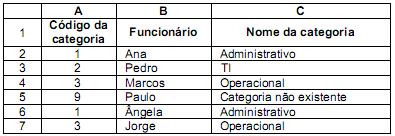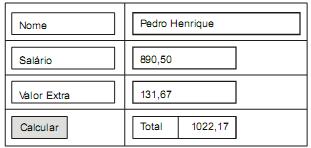Questões de Concurso
Para tce-sp
Foram encontradas 1.497 questões
Resolva questões gratuitamente!
Junte-se a mais de 4 milhões de concurseiros!
I. É um código escrito com a intenção explícita de se autoduplicar. Tenta se alastrar de computador para computador, incorporando-se a um programa hospedeiro. Ele pode danificar hardware, software ou informações.
II. Cria cópias de si mesmo de um computador para outro automaticamente, ou seja, sem a ação do usuário. Primeiro ele controla recursos no computador que permitem o transporte de arquivos ou informações. Depois que ele contamina o sistema, ele se desloca sozinho, distribuindo cópias de si mesmo pelas redes. Seu grande perigo é a capacidade de se replicar em grande volume. Não precisa de um programa hospedeiro.
III. É um programa de computador que parece ser útil, mas na verdade causa danos. Alastra-se quando a pessoa é seduzida a abrir um programa por pensar que ele vem de uma fonte legítima.
IV. É um termo genérico usado para softwares que realizam certas atividades como anúncios, coleta de informações pessoais ou alteração das configurações do computador, geralmente sem o devido consentimento.
Os itens I, II, III e IV referem-se, correta e respectivamente, a
O Windows Server 2003 possui nativamente um servidor de DNS que é de fundamental importância. Nesse servidor, os domínios DNS são implementados a partir da criação de zonas DNS que podem ser de vários tipos. Um desses tipos é novidade no DNS do Windows Server 2003, em relação a versões anteriores. Esse tipo de zona pode ser criada para a resolução imediata de nomes de um determinado domínio filho. Somente os registros do servidor de nomes, o início de autoridade e hosts necessários são cadastrados. Este recurso é recomendado quando domínios filhos (delegados, como, por exemplo, campinas.sp.gov.br, que é um domínio delegado a partir do domínio sp.gov.br) possuem mais de um servidor de DNS com autoridade, pois nestes casos o servidor de DNS "pai" precisaria ter cadastrado todos os servidores DNS com autoridade no domínio filho. Cadastrando uma zona desse tipo, o gerenciamento fica mais simples, pois essas atualizações podem ser feitas automaticamente.
O texto fala de um tipo de zona de DNS denominada zona

Trata-se de
A figura mostra um relacionamento entre duas tabelas estabelecido em um banco de dados criado no Microsoft Access 2010.

A figura mostra um relacionamento entre duas tabelas estabelecido em um banco de dados criado no Microsoft Access 2010.


Na célula C2 foi digitada uma função que exibe um valor de acordo com o código da categoria contido na célula A2. Em seguida, essa função foi arrastada até a célula C7, gerando os valores apresentados na coluna C. A função digitada obedece aos seguintes critérios:
1º Se o código da categoria for igual a 1, exibir a palavra Administrativo;
2º Senão, se o código da categoria for igual a 2, exibir a palavra TI;
3º Senão, se o código da categoria for igual a 3, exibir a palavra Operacional;
4º Senão, se o código da categoria for qualquer outro valor, exibir a frase Categoria não existente.
A função correta escrita na célula C2 é:

A função utilizada na célula A6 retorna o pagamento periódico de uma anuidade de acordo com pagamentos constantes e com uma taxa de juros constante. O uso correto dessa função na célula A6 é:

As caixas de texto da segunda coluna foram nomeadas de cima para baixo, respectivamente, como txtNome, txtSal, txtExtra e txtTotal. O botão Calcular foi nomeado como btnCalcular. Nesse botão, foi escrito uma linha de comando VBScript que será executada quando for disparado um evento de clique no botão. Essa linha soma o conteúdo do campo txtSal com o conteúdo do campo txtExtra e exibe o resultado no campo txtTotal. Com base no formulário apresentado, a escrita correta dessa linha de comando é
I. No BrOffice Writer a partir da versão 3, para definir as propriedades de um campo de formulário basta dar um duplo clique sobre o campo desejado que aparecerá a janela de propriedades.
II. No Microsoft Word 2010, a opção para adicionar um novo comentário sobre um texto selecionado encontra-se na guia Exibição.
III. No BrOffice Writer, o Assistente de mala direta encontra-se no menu Correspondências.
IV. No Microsoft Word 2010, o Assistente de mala direta encontra-se na guia Ferramentas.
Está correto o que se afirma em
House G.O.P. Leaders Agree to Extension of Payroll Tax Cut
By JENNIFER STEINHAUER
Published: December 22, 2011
WASHINGTON - Under a deal reached between House and Senate leaders, the House will now approve as early as Friday the
two-month extension of a payroll tax holiday and unemployment benefits approved by the Senate last Saturday, and the Senate will
appoint members of a House-Senate conference committee to negotiate legislation to extend both benefits through 2012.
House Republicans - who rejected an almost identical deal on Tuesday - collapsed under the political rubble that has
accumulated over the week, much of it from their own party, worried that the blockade would do serious damage to their appeal to
voters.
The House speaker, John A. Boehner, announced the decision over the phone to members on Thursday, and did not permit the
usual back and forth that is common on such calls, enraging many of them.
After his conversation with lawmakers, the speaker conceded to reporters that it might not have been "politically the smartest
thing in the world" for House Republicans to put themselves between a tax cut and the 160 million American workers who would benefit
from it, and to allow President Obama and Congressional Democrats to seize the momentum on the issue.
The agreement ended a partisan fight that threatened to keep Congress and Mr. Obama in town through Christmas and was
just the latest of the bitter struggles over fiscal policy involving House conservatives, the president and the Democratic-controlled
Senate.
Under the deal, the employee's share of the Social Security payroll tax will stay at the current level, 4.2 percent of wages,
through Feb. 29. In the absence of Congressional action, it would revert to the usual 6.2 percent next month. The government will also
continue paying unemployment insurance benefits under current policy through February. Without Congressional action, many of the
long-term unemployed would begin losing benefits next month.
In addition, under the agreement, Medicare will continue paying doctors at current rates for two months, averting a 27 percent
cut that would otherwise occur on Jan. 1.
The new deal makes minor adjustments to make it easier for small businesses to cope with the tax changes and prevents
manipulation of an employee's pay should the tax cut extension fail to go beyond two months.
Mr. Obama, who has reaped political benefits from the standoff, welcomed the outcome.
"This is good news, just in time for the holidays," he said in a statement. "This is the right thing [VERB 1] to strengthen our
families, grow our economy, and create new jobs. This is real money that will [VERB 2] a real difference in people's lives."
(Adapted from http://www.nytimes.com/2011/12/23/us/politics/senate-republican-leader-suggests-a-payroll-tax-deal.html?_r=1&nl=
todays hea dlines & emc=tha2&pagewanted=all)
House G.O.P. Leaders Agree to Extension of Payroll Tax Cut
By JENNIFER STEINHAUER
Published: December 22, 2011
WASHINGTON - Under a deal reached between House and Senate leaders, the House will now approve as early as Friday the
two-month extension of a payroll tax holiday and unemployment benefits approved by the Senate last Saturday, and the Senate will
appoint members of a House-Senate conference committee to negotiate legislation to extend both benefits through 2012.
House Republicans - who rejected an almost identical deal on Tuesday - collapsed under the political rubble that has
accumulated over the week, much of it from their own party, worried that the blockade would do serious damage to their appeal to
voters.
The House speaker, John A. Boehner, announced the decision over the phone to members on Thursday, and did not permit the
usual back and forth that is common on such calls, enraging many of them.
After his conversation with lawmakers, the speaker conceded to reporters that it might not have been "politically the smartest
thing in the world" for House Republicans to put themselves between a tax cut and the 160 million American workers who would benefit
from it, and to allow President Obama and Congressional Democrats to seize the momentum on the issue.
The agreement ended a partisan fight that threatened to keep Congress and Mr. Obama in town through Christmas and was
just the latest of the bitter struggles over fiscal policy involving House conservatives, the president and the Democratic-controlled
Senate.
Under the deal, the employee's share of the Social Security payroll tax will stay at the current level, 4.2 percent of wages,
through Feb. 29. In the absence of Congressional action, it would revert to the usual 6.2 percent next month. The government will also
continue paying unemployment insurance benefits under current policy through February. Without Congressional action, many of the
long-term unemployed would begin losing benefits next month.
In addition, under the agreement, Medicare will continue paying doctors at current rates for two months, averting a 27 percent
cut that would otherwise occur on Jan. 1.
The new deal makes minor adjustments to make it easier for small businesses to cope with the tax changes and prevents
manipulation of an employee's pay should the tax cut extension fail to go beyond two months.
Mr. Obama, who has reaped political benefits from the standoff, welcomed the outcome.
"This is good news, just in time for the holidays," he said in a statement. "This is the right thing [VERB 1] to strengthen our
families, grow our economy, and create new jobs. This is real money that will [VERB 2] a real difference in people's lives."
(Adapted from http://www.nytimes.com/2011/12/23/us/politics/senate-republican-leader-suggests-a-payroll-tax-deal.html?_r=1&nl=
todays hea dlines & emc=tha2&pagewanted=all)